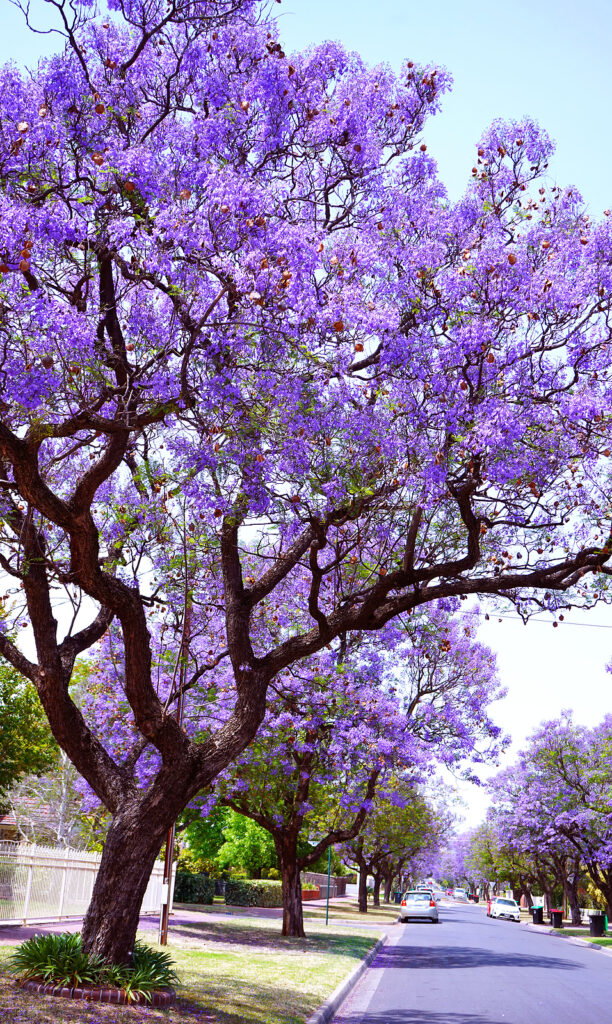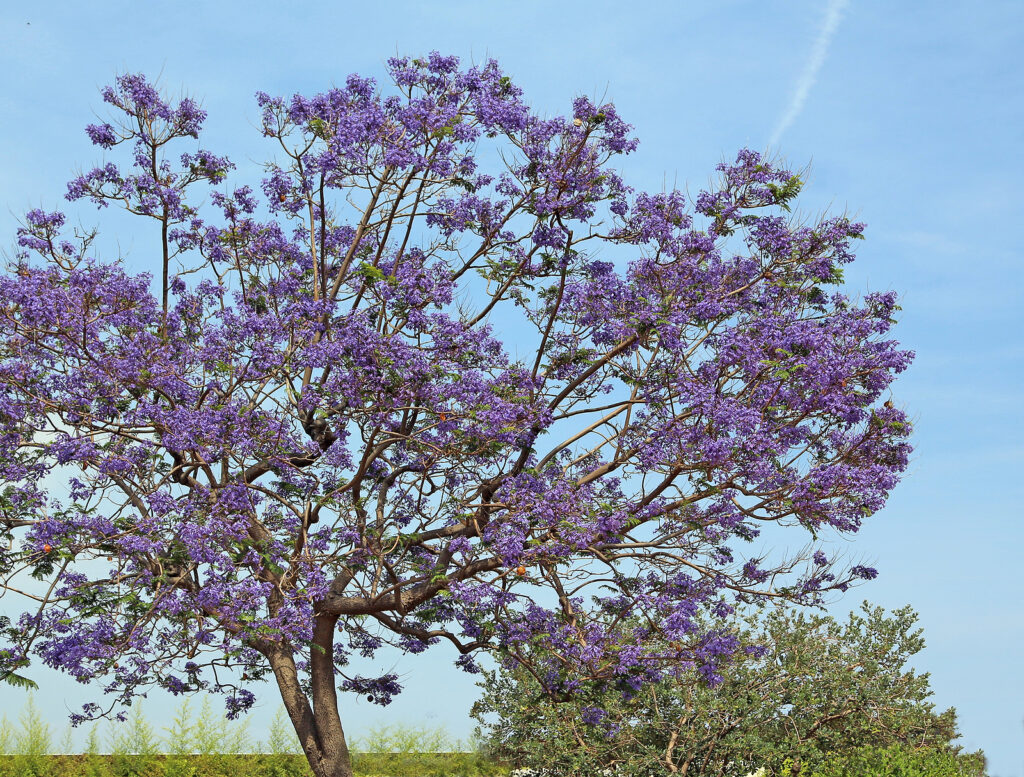Jacarandas bear long clusters of lavender-blue tubular flowers in spring. They are one of the showiest spring-blooming trees.
Jacarandas are semi-evergreen trees native to the rain forests of South America. They are well suited as street trees or specimens. They grow to 50 feet tall and 30 feet wide. Jacarandas grow best where summers are warm and winters are mild.
The Jacaranda genus includes more than 30 species. Jacaranda mimosifolia is stunningly beautiful in spring and most commonly grown.

Get to know Jacaranda
- Plant type: Deciduous or semi-evergreen tree
- Growing zones and range: Zones 9-11
- Hardiness: Young plants are hardy to 25°F (-4°C)
- Height and width: 25 to 50 feet (7.6-12m) tall and 15 to 30 feet (4.5-9.1m) wide; oval headed, sometimes multi-trunk
- Foliage: Finely cut, fernlike leaves
- Flowers: Lavender blue, tubular flowers to 2 inches long in 8-inch-long clusters; roundish, flat seed capsules follow flowers.
- Bloom time: Mid- to late spring
- Uses: Street or lawn tree, specimen tree
- Common name: Jacaranda
- Botanical name: Jacaranda
- Family name: Bignoniaceae
- Origin: Rainforests of South America
Where to plant Jacaranda
- Plant Jacaranda in full sun.
- Jacaranda will grow in a wide variety of soil, but sandy soil, well-drained soil is best.
- Jacaranda may fail to flower where is heat is inadequate or if in the path of ocean winds.

When to plant Jacaranda
- Set container-grown plants in the garden in spring or autumn.
- Sow seed in spring.
Planting and spacing Jacaranda
- Space Jacaranda 15 to 30 feet (4.5-9.1m) apart.
- Sow seed at 61°-70°F (16-21°C).
How to water and feed Jacaranda
- Keep the soil evenly moist but not wet. Water Jacaranda sparingly in winter.
- Fertilize Jacaranda with an all-purpose slow-release fertilizer in spring.
Jacaranda care
- Where Jacaranda is not hardy it can be grown in a cool indoor spot as a foliage plant; indoor plants can be grown to 6 feet (2m) tall.

Jacaranda pests and diseases
- Whiteflies and spider mites may be a problem.
- Thornbugs, crown gall, mushroom rot, and leaf spot can occur.
Jacaranda propagation
- Sow seed in spring.
- Root semi-ripe cutting with bottom heat in summer.
Jacaranda varieties to grow
- Jacaranda jasminoides: Small, spreading deciduous tree 12 feet tall (3.6m) and 8 feet (2.4m) wide; dark purple flowers.
- J. mimosifolia is sometimes sold as J. acutifolia. Broad spreading tree to 50 feet (15m) tall and 30 feet (9.1m) wide; white-throated, purple-blue flowers; narrow, mid-green leaflets.















